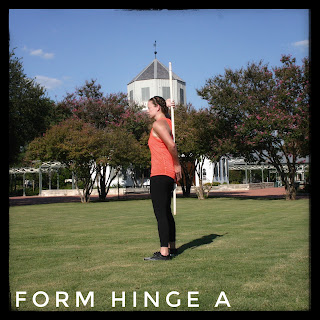What It Is
A hip hinge is a basic human movement pattern that works the muscles across numerous joints as your hips become the primary fulcrum point for the exercise.
Why It’s Important
Master The Basics To Safely Progress
Hip Hinge form teaches your body how to correctly power through your hips while maintaining a neutral spine. By learning how to make the movement utilizing the glutes and hamstrings, you will help prevent injuries. After it becomes second nature to engage your core, maintain a flat back, and drive from your hips, you will be able to move onto more complicated hip hinge exercises.
Hip Hinge form teaches your body how to correctly power through your hips while maintaining a neutral spine. By learning how to make the movement utilizing the glutes and hamstrings, you will help prevent injuries. After it becomes second nature to engage your core, maintain a flat back, and drive from your hips, you will be able to move onto more complicated hip hinge exercises.
Good Posture Becomes Second Nature
The body alignment for walking elegantly with a book on your head is very similar to performing a hip hinge form exercise. Chest up, shoulders back, soft knees, and an engaged core are vital to being able to perform both of these movements correctly. Practicing with correct form can help translate proper posture alignment to your daily life.
The body alignment for walking elegantly with a book on your head is very similar to performing a hip hinge form exercise. Chest up, shoulders back, soft knees, and an engaged core are vital to being able to perform both of these movements correctly. Practicing with correct form can help translate proper posture alignment to your daily life.
How To Do It
Use a dowel rod or other similar piece of exercise equipment to complete the hip hinge form movement. Start by grabbing the dowel with one arm high in an overhand grip behind your head, and your other arm low with a light grip at slightly below waist level behind you.
Keep feet shoulder width, knees soft, and core braced before beginning movement. Push your chest out and shoulders back to bring the dowel against your head, upper spine, and lower back (focus on keeping belly button in and up to keep small of back against dowel). You will aim to maintain dowel against spine and head throughout exercise to check your form.
Begin movement with a hinge at the hips, feel hamstrings stretch, bend torso forward and stop when chest is parallel to floor. Utilize your glutes and hamstrings and stand back to start position. Key point: it is important to keep the dowel touching in three places: head, upper back, and lower back.
Modify It
If you feel like you are unable to engage all the appropriate muscles to perform the movement then modify with a supine hip hinge extension. The static nature of the exercise will allow you to practice activating the muscles needed for hinge exercises without a lot of stress from movement. Use a bench, stability ball, or suspension straps to challenge your muscles in different ways with the same exercise.
Hinge Infographic:
For daily fitspiration follow @soleshaping on:
Related Posts:
Sole Shaping Blog is written by a nationally certified personal trainer, however, the topics and information given might not be specific for your health and wellness needs. The blog is intended for informational purposes only and not direct health advice. Consult with a doctor before beginning an exercise program or changing your nutritional diet. The blog is accurate and true to the best of my knowledge, but omissions, errors or mistakes may occur.
This website contains affiliate marketing ads which means if you follow a link and make a purchase, we receive small compensation at no extra cost to you.










